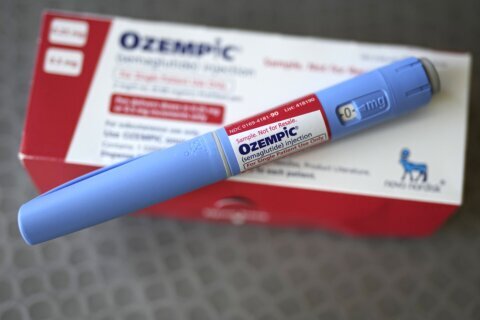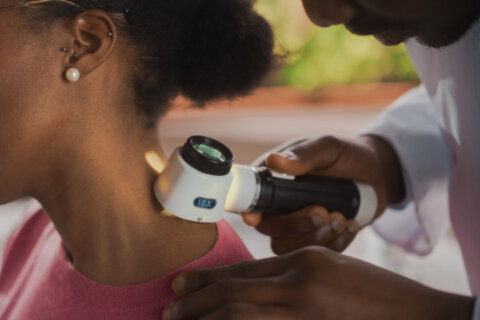March is National Kidney Month, a time to raise awareness about a disease that affects more than 30 million adults in the U.S.
Dr. Griffin Rodgers, director of the National Institute of Diabetes and Digestive and Kidney Diseases at the National Institutes of Health, joined WTOP to discuss the signs and symptoms of kidney disease, plus ways to prevent it.
What is the role of the kidneys?
The kidneys, which are about the size of a fist and are located in the lower portion of the back, are responsible for at least three vital functions:
- They filter toxic waste products “that our bodies produce over the course of 24 hours as a result of our normal metabolism,” Rodgers said;
- They maintain the body’s fluid and electrolyte status;
- And they produce the hormone responsible for keeping the body’s red blood cell count elevated, as well as a hormone vital for bone health.
What is kidney disease, and what are the symptoms?
Kidney disease is when the kidney is damaged to the point where it can’t filter blood properly — and usually, symptoms are not obvious until the kidney is already severely damaged and functioning at or below about 25 percent, Rodgers said.
“Because you are unable to maintain good fluid and electrolyte control, your body starts to retain fluids in the form of swelling in your ankles and your face and other places,” Rodgers added.
The disruption in electrolytes may cause unexplained nausea, vomiting or itching. And with the hormone disruption, anemia, fatigue and bone fractures from otherwise trivial injuries may occur.
“We don’t want people to get to that stage. We want them tested early so that preventive measures can begin to delay the progression to later stages or end-stage kidney disease,” Rodgers said.
Testing for kidney disease
One goal of National Kidney Month is to encourage patients to talk to their doctors about their risks for kidney disease and whether they should be tested.
Rodgers said testing for kidney disease is usually part of the “normal battery of tests that are done.” One part is a blood test to determine how well the kidneys are filtering out the toxins, and the other is a urine test to measure protein levels.
“Your kidneys are supposed to filter out toxins and retain important proteins in the system, but as those proteins are excreted in the urine, that’s a good indication that kidney damage has occurred,” Rodgers said.
Who is at risk?
The two greatest risks for kidney disease are diabetes and high blood pressure. Rodgers said one in three people with diabetes and one in five with high blood pressure has kidney disease.
A family history of heart disease or kidney disease also increases one’s risk. And Rodgers said certain racial and ethnic groups, including African Americans, Hispanics and American Indians, are also at greater risk of kidney disease.
“Even though your genes may put you at high risk, it may not necessarily determine whether that risk becomes a reality, and a lot of that has to do with environmental factors and things that you can control,” said Rodgers, who added that maintaining a healthy weight and getting an adequate amount of sleep are two preventive measures.
Treatments for kidney disease
Rodgers said there are medicines that can slow the progression of kidney disease from early-stage chronic kidney disease to end-stage kidney disease, and many more are being introduced. More than 700,000 Americans have end-stage kidney disease, which is treated with dialysis or a kidney transplant.
For more information on kidney disease, visit NIDDK’s website.







